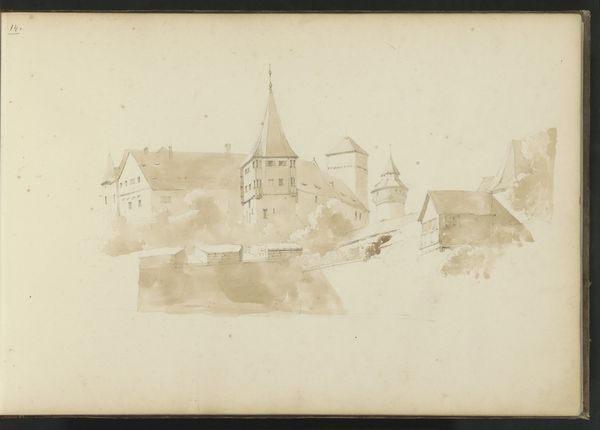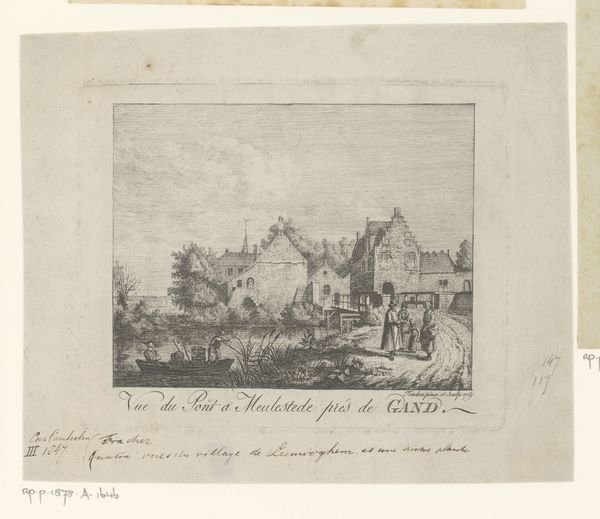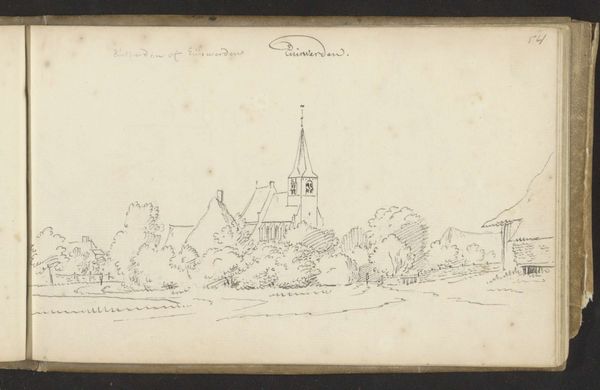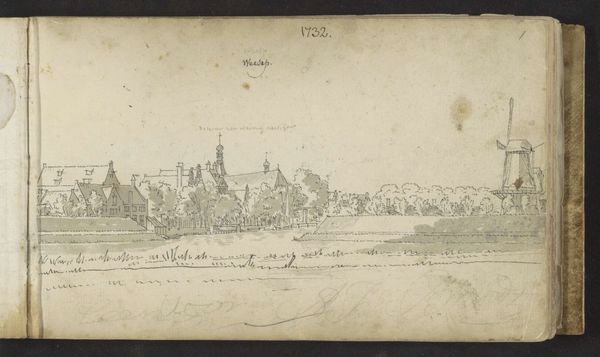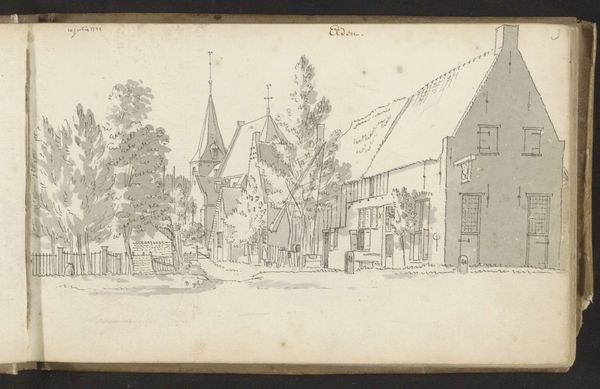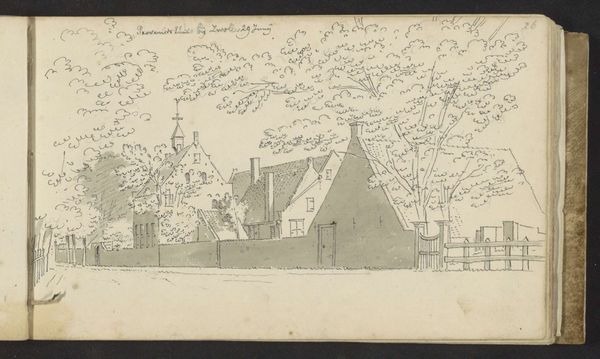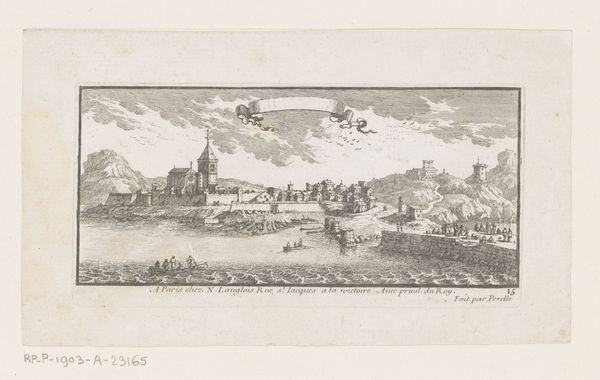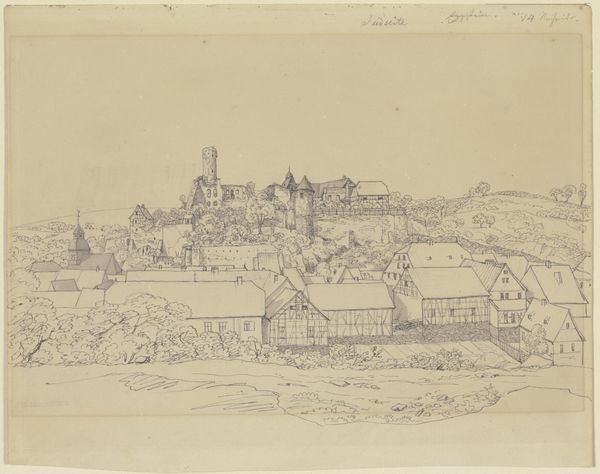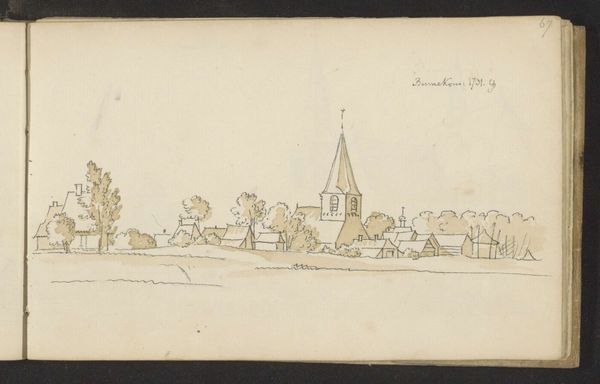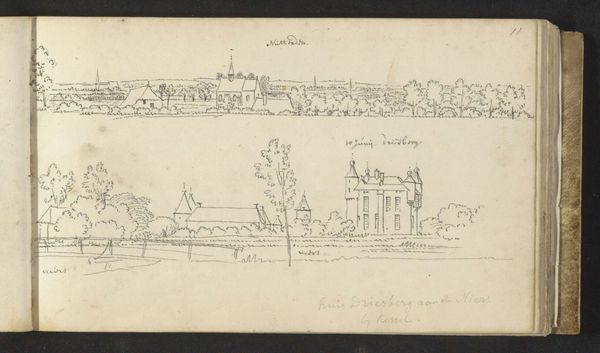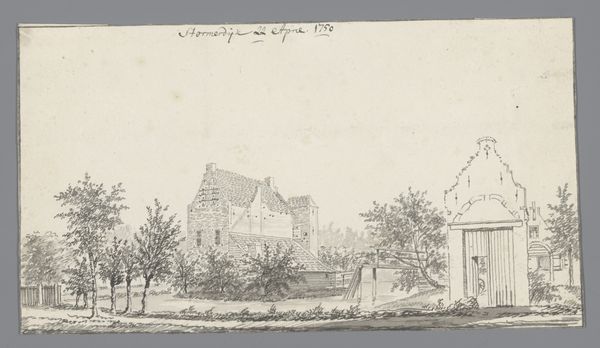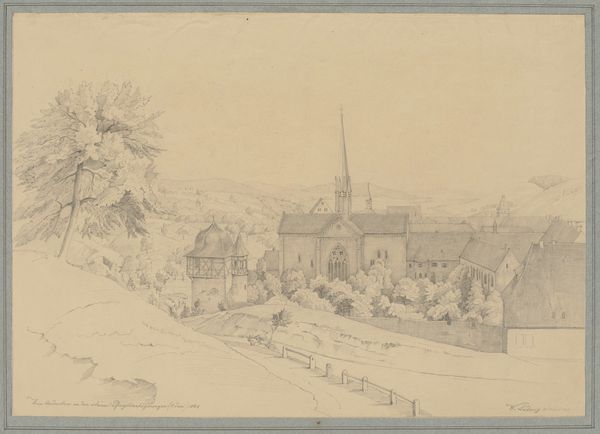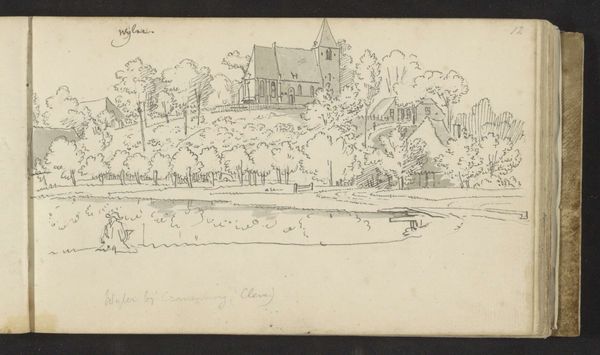
drawing, pencil
#
drawing
#
aged paper
#
light pencil work
#
quirky sketch
#
dutch-golden-age
#
sketch book
#
landscape
#
personal sketchbook
#
sketchwork
#
pencil
#
sketchbook drawing
#
genre-painting
#
storyboard and sketchbook work
#
sketchbook art
#
design on paper
Dimensions: height 127 mm, width 204 mm
Copyright: Rijks Museum: Open Domain
Editor: This drawing, "Gezicht op Giessenburg" by Cornelis Pronk, created sometime between 1730 and 1780, uses delicate pencil work to depict a Dutch scene. It has such a peaceful, quiet quality. What do you see in this piece? Curator: This sketch provides a valuable glimpse into the social landscape of the Dutch Golden Age. Note how Pronk focuses on the ordinary. We see no grand historical figures, no glorification of wealth, but a modest village scene. How does this contrast with the typical narratives we often see from this period, narratives that focus on power and commerce? Editor: It really doesn't seem focused on the traditional heroic narratives. It’s almost mundane, but in a beautiful way. Curator: Precisely! Pronk seems to be making a statement about the value of everyday life. The focus on the landscape and the daily lives of its inhabitants reflects a shift in perspective – a subtle resistance against the dominant narratives of the elite. Think about who had the leisure time and resources to commission or create art then. Do you think that reality plays into the subject? Editor: It's interesting to consider this piece in terms of who it might have been made *for*, not just *by*. This focus on the 'ordinary' almost feels radical when you consider it as a conscious choice. Curator: Exactly. And remember, even seemingly simple depictions can hold layers of meaning, prompting us to consider the complex relationship between art, society, and individual experience. Editor: This has completely changed how I see the drawing. It's not just a quaint landscape anymore, it's a subtle commentary. Curator: Indeed. And that's the power of contextualizing art, allowing us to see it not just as an object of beauty, but as a reflection of societal values and a potential voice for the marginalized.
Comments
No comments
Be the first to comment and join the conversation on the ultimate creative platform.
